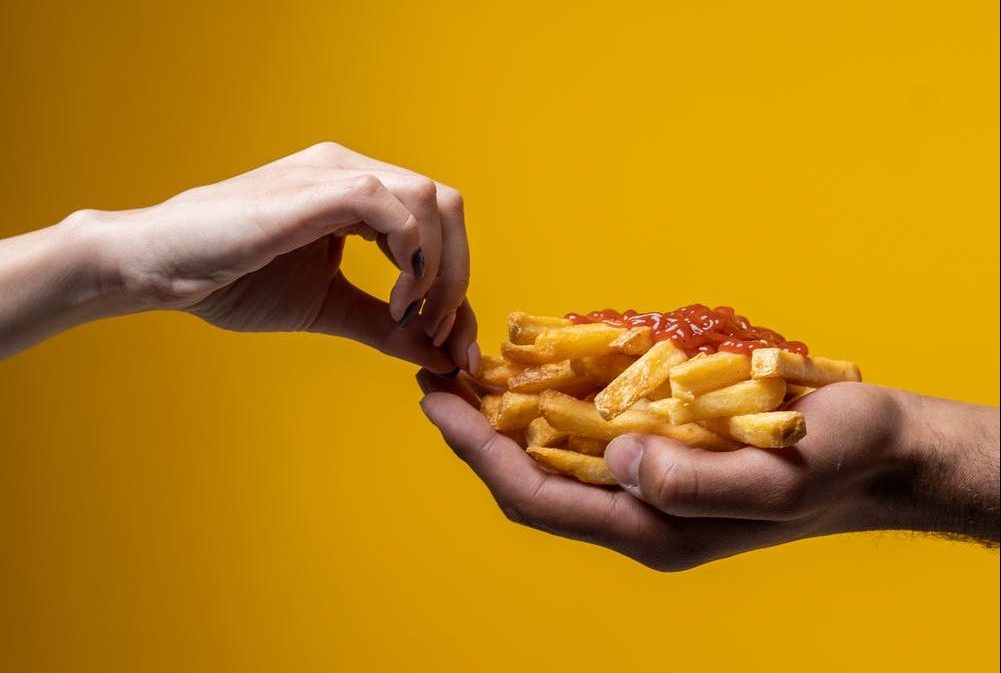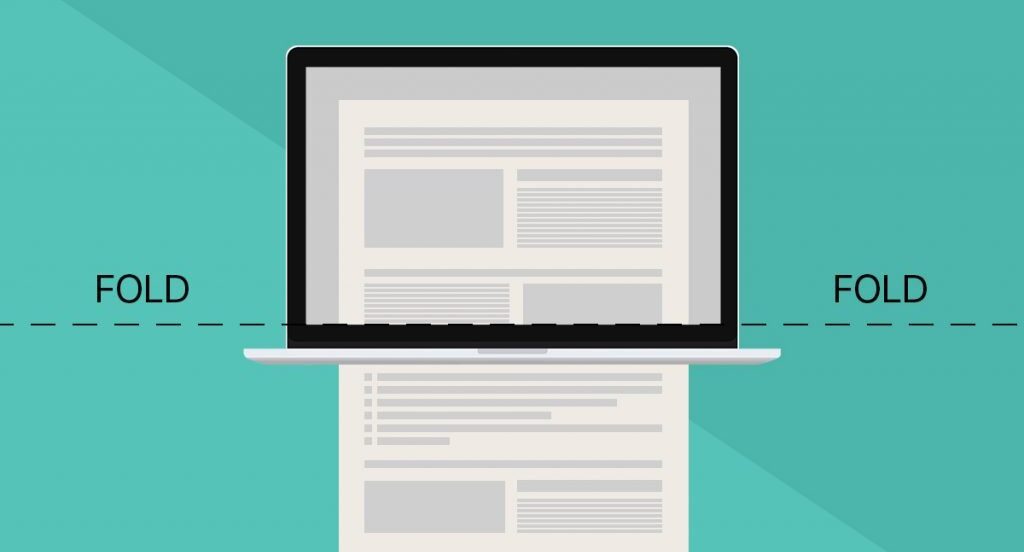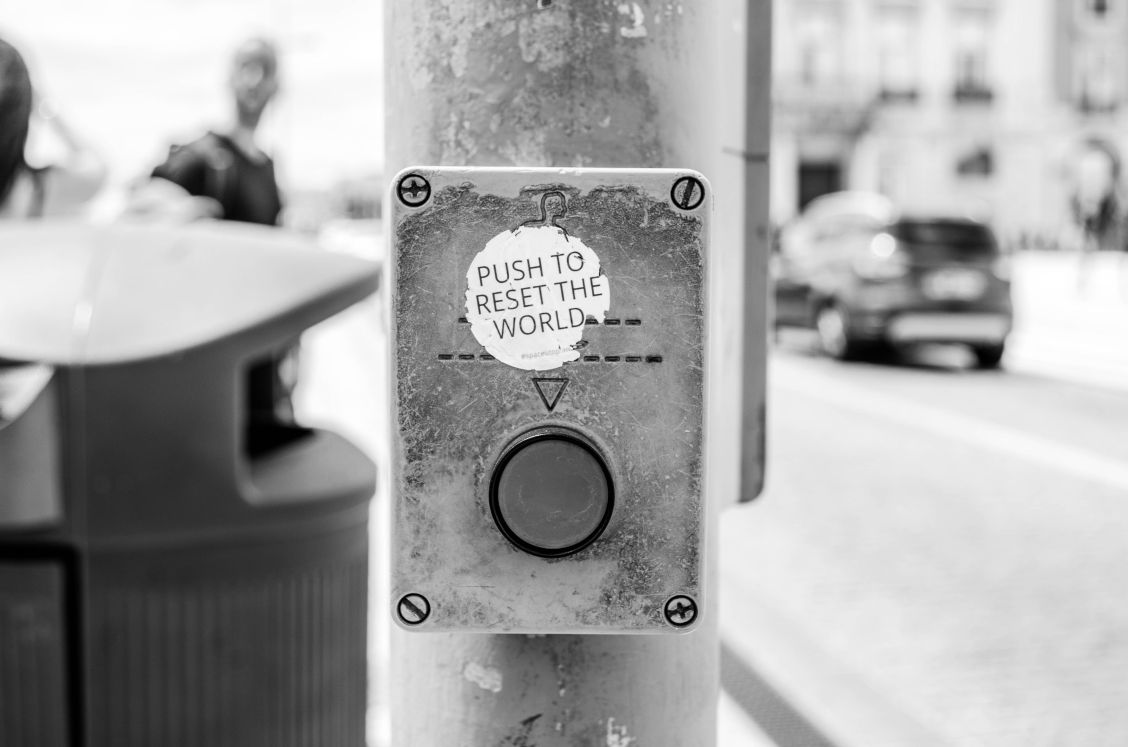"You are only one sales letter away from being rich." That inspiring quote comes from legendary copywriter Gary Halbert. The easiest way to define a sales letter is the "pitch" you make to convince people to buy. He means that one well-written marketing message can make a business, and he's right.
Back to our quick history lesson, sales letters got their name from the literal letters that businesses and marketers used to send by mail. Many people consider this "junk mail", until something arrives that catches their eye, speaks directly to them, and solves their problems. Just like any ad messaging really.
You might be wondering why we're discussing sales LETTERS when you came here to learn about sales PAGES. The answer is because sales pages are simply online sales letters.
Your sales pages are where the rubber meets the road and where money changes hands. They are the only things standing between you and your sales, so it's your job to make sure they do their job.
Keep in mind that we're focused on direct-response marketing, with the goal of getting our readers to take an immediate action. We are NOT interested in those cologne or jewelry ads that make no sense and never ask the audience to do anything. Our sales pages will have one goal. To sell NOW.
Sales Letters
As you might expect, your sales letter, or sales message plays a very important role on any sales page. Whether your sales letter arrives by mail, e-mail, advertisement, web page, or other, successful sales letters tend to [loosely] follow this format.
- Attention grabbing headline and/or image
- Main message/story
- Build trust and authority
- Irresistible Offer
- Call to Action
Sales letters can get much more complicated than this, but this is the basic structure of most direct-response sales materials. We don't have time to discuss every one of these components here, so click those links to learn more about the specifics of sales letters and messaging.
Sales letters are 90% science and 10% art, because human psychology is well-documented, and marketers found out long ago that successful sales pieces all happen to follow the above formula.
This is not the time to flex your creative muscles. This formula is literally the key to convincing anyone to take action and/or buy. Follow the steps, assemble your sales letter, and then add sprinkles.
The idea of writing a sales letter is a false idea. A truer description is assembling a sales letter...Good, solid, time-tested sales & sales letter strategies do not wear out or become obsolete. What worked in a sales letter in 1950 will still work in 2050, with only slight language modification.
Dan Kennedy
The Ultimate Sales Letter
Copy-writing

Copy-writing can be copy-righted
There's one more over-arching theme above sales pages which is sales copy. If you're not familiar, "copy" just means the exact words you choose to include in your marketing materials.
Professional copywriters know that there are huge differences between what you write in a headline, in a lead, in an offer, and more. Psychology also plays a large role in word selection, while tools [such as] analogies, stories, repetition, and many more can also contribute to inspiring trust and sales.
Copywriting may be the most important science/discipline in all of marketing, sales, and business. You can learn more about copywriting here, but for now, just know that the exact words you choose to place on your marketing and sales materials can literally make or break a business.
If you're not getting the response you want from a sales page, it usually helps to extend as many sentences as you can with "...so that you can...". This will lead you to dig deep into your real benefits.
Length
One of the most common questions I hear about writing sales letter/pages is:
"How long does it have to be?"
For starters, don't think of the length of your sales page as "HAVING to be" a certain length. It would be more appropriate to ask something [more] like:
"How long CAN it be?
Your sales pages are the only things standing between you and success. It is not a chore to create them, but an opportunity because [online] business would be much harder without them.
Anyways, the best answer to this question is..."as long as it needs to be." That means cut everything that doesn't contribute to sales or your message, and add as much as you want that contributes to sales.
Your sales letter can be one paragraph, or hundreds of pages, as long as every single part of is proven to lead to the most sales. Remember you are not an artist here; but a scientist following a plan. or a chef following a recipe. Whichever puts results over personal preferences.
There is a universal belief in lay circles that people won’t read long copy. Nothing could be farther from the truth.
David Ogilvy
Confessions of an Advertising Man
11) Know Your Customer
Yes, we are still in the preparation stage because there is a lot of work to be done before your sales letters or sales pages can do their best work. Some of the most important work that goes into any aspect of your marketing [is] researching, choosing, and knowing your ideal customers, inside and out.
This means you will have to get to know their likes, dislikes, fears, goals, dreams, bad experiences, and much more. For more ideas on this, you can research customer avatars here and at DigitalMarketer.
If you have trouble writing a sales page after reading this post, it's probably because you haven't narrowed down your ideal customer yet, because once you have a solid understanding of who your customer is, then you'll be able to communicate with them in a way that leads them to happily buy.
10) Value Proposition

Being the best means nothing if you can't communicate it
Alright, this is the last prep-step here, before we start crafting your irresistible sales page. Sales pages aside, this is one of the most important steps to creating or growing any business.
It's a simple (but not easy) exercise in which you complete this statement
"I help ______1______ to ______2_______ with/by/through ____3____."
...where "1" is WHO you serve, "2" is WHAT result you get for them, and "3" is HOW you do it. All of these factors are very important, but if I had to choose, #3 is the least important and #1 is the most.
This exercise may seem easy, but it is one of the toughest challenges that entrepreneurs and marketers have to get right. The main problem most businesses have when answering this question is being FAR too vague. This leads to many answers that resemble "I do everything for everyone".
Filling in this sentence [often] coincides with choosing your niche, which is another crucial business task. Remember that 1 = your ideal customer, 2 = their dream result, and 3 = your vehicle to deliver.
Even if you don't include this sentence on your sales page, it's good for you to know it yourself.
9) Headlines
When you have written your headline, you have spent 80 cents out of your dollar...A change of headlines can make a difference of 10 to 1 in sales...
David Ogilvy
Confessions of an Advertising Man
At first they’re not going to READ your letter…only glance at the headline and decide if you’re getting any more of their attention."
Ray Edwards
Copy That Sells
If it's not clear yet, your headline is an EXTREMELY important part of your sales page. If your offer is the short version of your sales letter, then your headline is the super-short version of your sales letter.
Of course, you will have to carefully choose which parts of your sales letter to add to your headline. For some sales pages, your offer may be best, while for others, it may be your target audience like these:
ATTENTION: MESOTHELIOMA VICTIMS
Ready to Lose 5 Pounds in 5 Days?
Then, the puppy exploded...
Here are just a few examples, but you can see that each headline speaks to a different audience. The first identifies an experience, the second identifies a goal, and the third sparks curiosity.
It's actually surprisingly difficult to predict which headline will work best, so you'll have to get busy learning about your customer, brainstorming headline ideas, and testing your top options in the [wild].
And also, sub-headers, or the text below your headline, can matter/help a lot too.
8) Bottom Screen
I just made a big deal about headlines because they are the first thing your audience sees when they visit your sales page. This leads us to the second thing your audience will probably do, which is jump straight down to the [very] bottom of your sales/web page in search of what you're pitching.
This may not seem like great news, but if your readers are here, then that means your headline did it's job, which is great news in fact. Some people like to hide their offer in the middle of their sales pages, so that potential customers don't get scared off too fast, but this can work against you as well.
Remember that the job of every single word in your sales letter is to persuade the reader to read the next word. The headline leads to the bottom of the screen, which leads to the pitch, which leads to the offer, and then call-to-action. Employ every bit of real estate on your page to maximize results/sales.
PS: and by the way, include a PS! PSs tend to be the "most read" after headlines. So make them count.
7) The Fold

Stay above the fray and the fold
If you're not familiar with web marketing lingo "above the fold" means the part of a web page you see before you scroll down. This means that anything you must scroll down to see is "below the fold."
Not that we're clear on that, remember how your headline is important because it's the first thing your audience sees? Well something similar can be said about your above-the-fold sales page content.
We'll talk more about images, colors, and calls-to-action in a bit, but just keep in mind that this area offers you more real estate than your headline to communicate your message and value. This doesn't mean you should fill it with distractions, but with whatever causes your ideal customers to read on.
6) Scanability + Visual Contrast
At first they’re not going to READ your letter…only glance at the headline and decide if you’re getting any more of their attention. If you hold their attention, they’re going to “skim, scroll, and scan”.
Ray Edwards
Copy That Sells
Back to copywriting and design, your sales page must be scannable, clear, and easy to navigate.
In a perfect world, our ideal customers would turn off their phones, drop off the kids, and close all other browser tabs before sitting down to slowly and carefully read our sales pages from top to bottom.
As you've probably heard, we don't live in a perfect world, which means your readers will likely go from 1) glancing at your headline, to 2) scrolling straight to the bottom, to 3) scroll back to the top to quickly scan headlines, titles, and any other text that stands out.
The point is that your sales page NEEDS to be scannable, because it WILL be scanned. A lot. A big part of scanability is visual contrast. The easiest ways to do this are with color, images, or video, but simple thin columns with a clear hierarchy of text can work well too (newspapers & magazines).
People are scanners. No one has the time to sit and read a 1000 word blog post anymore.
Chris Ducker
Rise of the Youpreneur
5) Images & Video

Images, video, and color attract eyeballs
Images and videos can do a lot more than just add visual contrast. For example, you could skip the fancy sales page and instead simply display your video sales letter (VSL) and a call-to-action button.
In most case, you'd be better off with a video AND a standard sales page, but it always depends. You can also think of images as quasi-headlines because both can perform the crucial task of attracting initial attention. For most people, an image WITH text works best, but there are always exceptions.
Images give your more real estate to communicate your sales/marketing message. Your images can tap into your readers' dreams, fears, aspirations, and more. You can set the environment, establish authority, or build rapport, all with your images.
Add images and/or video where you can (and where it SELLS), but especially where customers may need an example or demonstration or idea of what you're talking about.
4) Body
Technically, all a sales page needs is a headline, an offer, a call-to-action button, and maybe an image of the thing being sold. Fortunately though, we have much more real estate to work with than that. The headline is what gets their attention, but the body is where you persuade them to buy.
You can think of the body of your sales letter as "everything between your headline and offer". This includes your opening sentence (lead), your story, your happy-customer stories, and more. Of course, you'll also need to describe whatever you're selling and why it will solve the reader's problems.
There are no hard rules on what to include in the body of your sales letter, but remember that sales are the only thing that matter. Read this entire post for some great ideas to start with.

Sign up for The 20 Steps to
Optimize Your Funnel for Conversions!
3) Build Trust + Authority

But what do the Amazon/Yelp/YouTube reviews say?
This is a more copywriting-focused, but regardless of what you think you sell; what you ACTUALLY sell is trust. Trust that the-thing-you-sell is safe and that it delivers the results you say it does.
There are MANY ways to build trust and authority, including story-telling, niching down, publishing content, raising your prices, and much more. Even the cure for cancer probably wouldn't sell one unit if you're selling them out of your dirty, windowless van. Building trust and authority is how you fix that.
Trust and authority really are your primary product, so building them up should be a top priority.
2) Urgency & Scarcity
Back to sales letters and copywriting, urgency & scarcity are your best/strongest tool in your war journey towards more sales, higher profits and happier clients. This is why they play huge roles in any sales copy, letters, pages, or materials.
To be clear, urgency means lack of TIME (24-hour sale), and scarcity means lack of AMOUNT (only for the first 100 callers). They're similar and often found together, but they're different enough.
Humans evolved to default to inaction and the status quo. Injecting urgency and scarcity into your sales materials actually does your reader a favor by giving them the push they need to take action.
The basics are urgency and scarcity. That’s what gets people to take action.
Russell Brunson
Expert Secrets
1) Calls-to-Action

It's that easy
Once your reader sees your offer, they will think it's nice, but they will also wonder what to do next. Your call-to-action is the part where you tell your audience EXACTLY what to do next.
Whether you want them to sign up, or book a call, or buy, or whatever, you should explicitly tell them to. Don't be shy; don't fear being pushy, and don't make any other excuses for not closing the sale.
You may have noticed that I have several calls-to-action on this blog post you're reading. Two are in the top-right corner and you just passed an opt-in box. Learn more about creating a great CTA here.
Most advertising peters out and meekly ends without a clear and direct call to action.
Dan Kennedy
No B.S. Guide to Direct Response Social Media Marketing
This post contains affiliate links.
